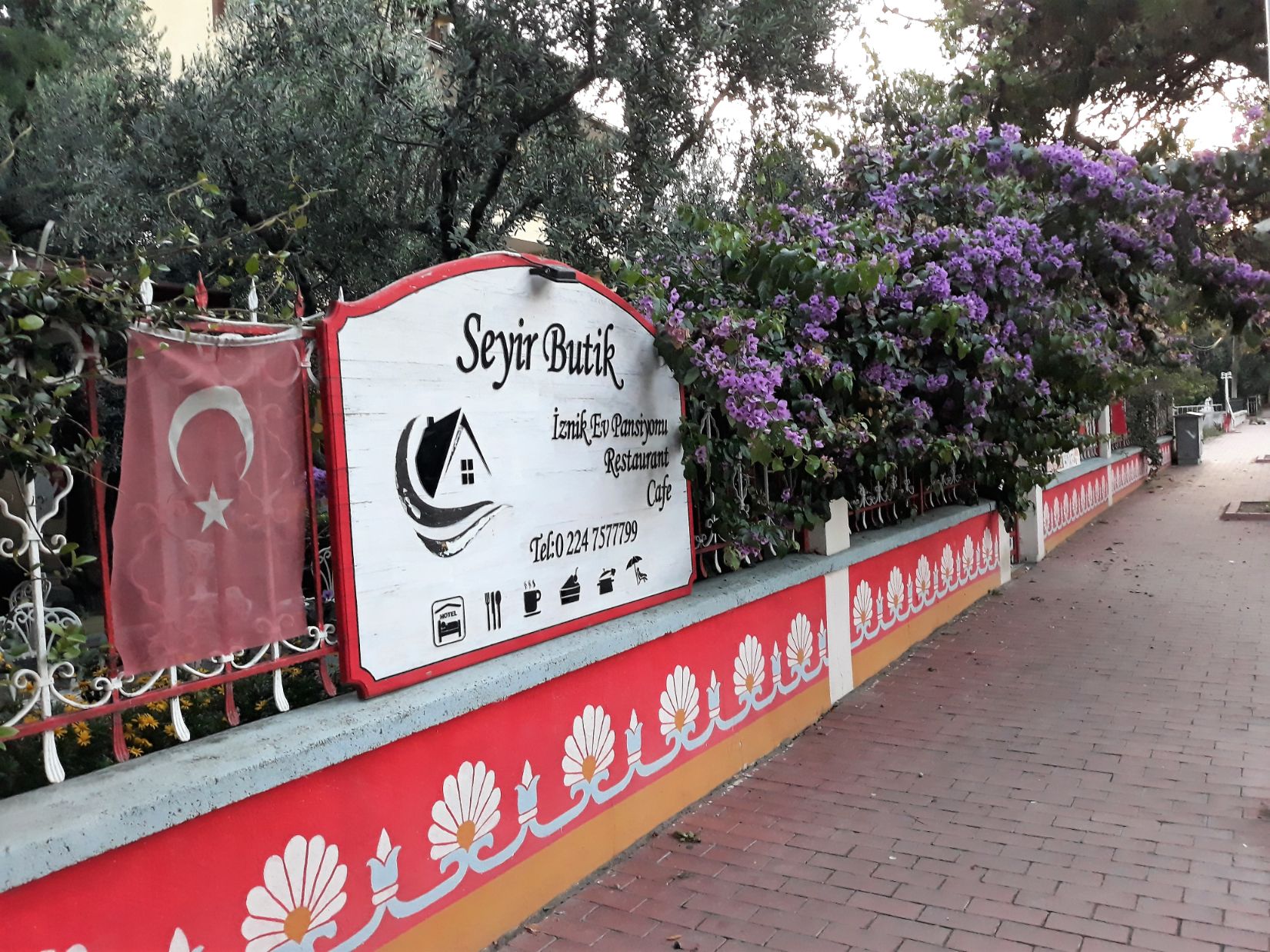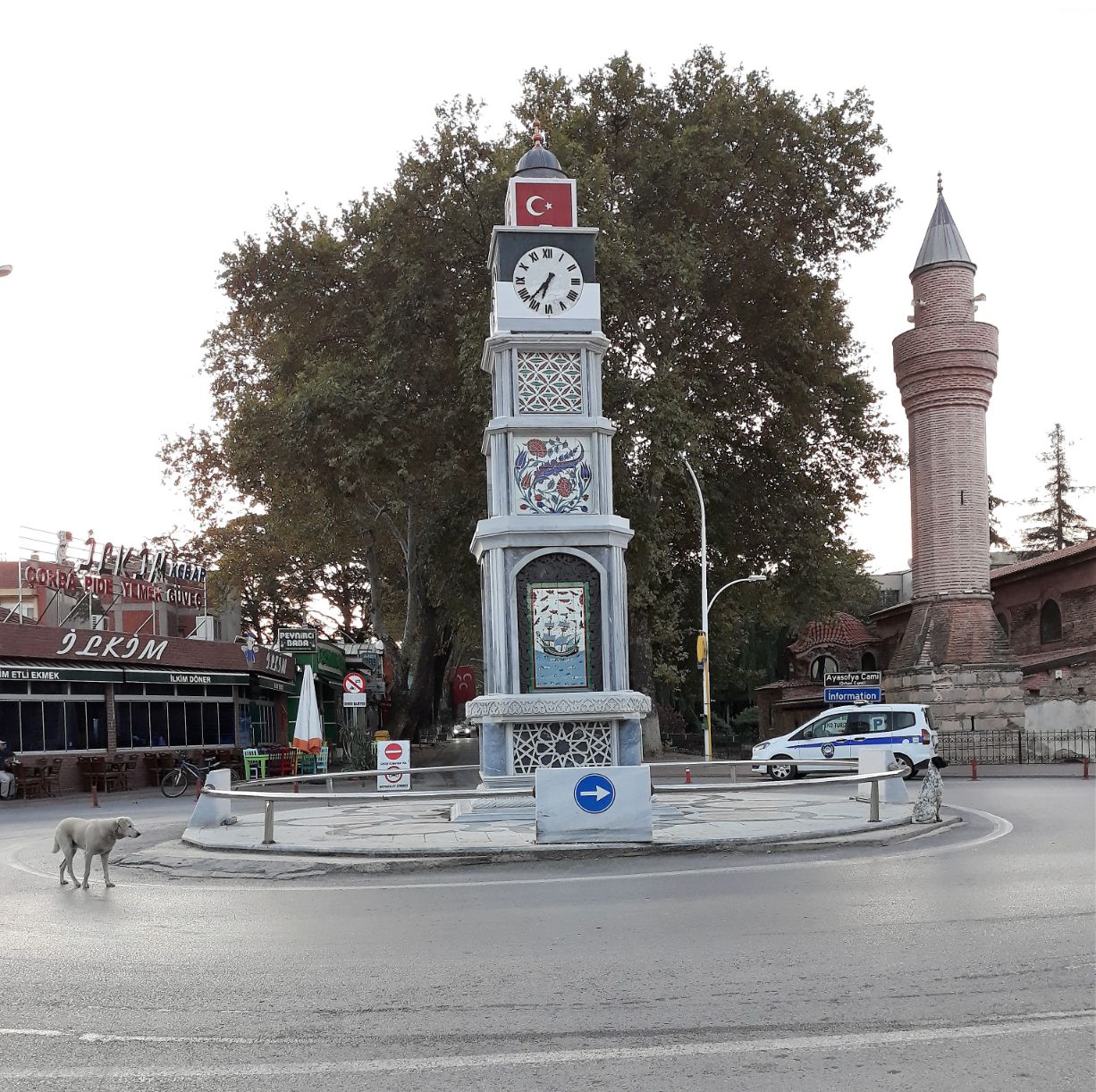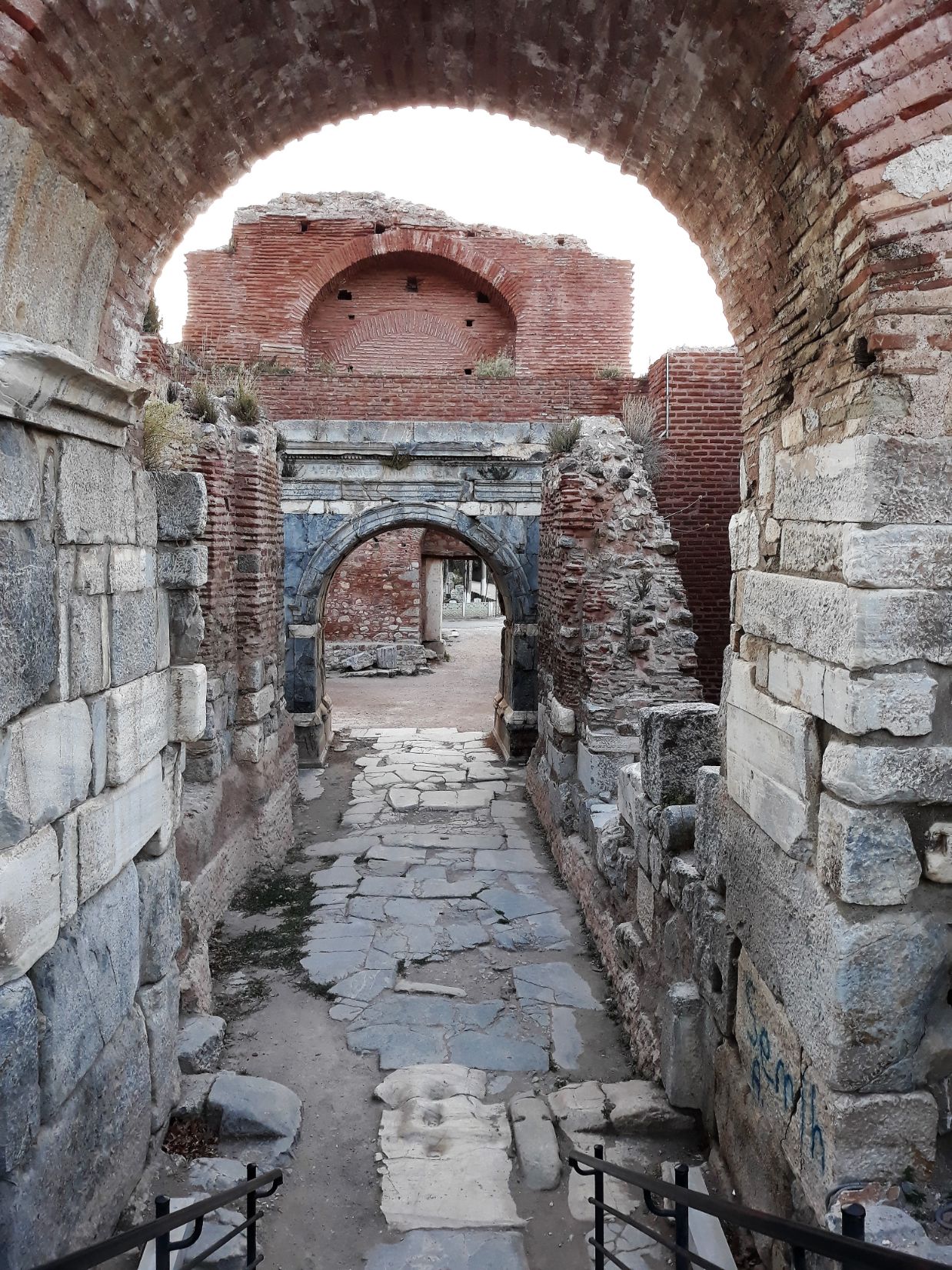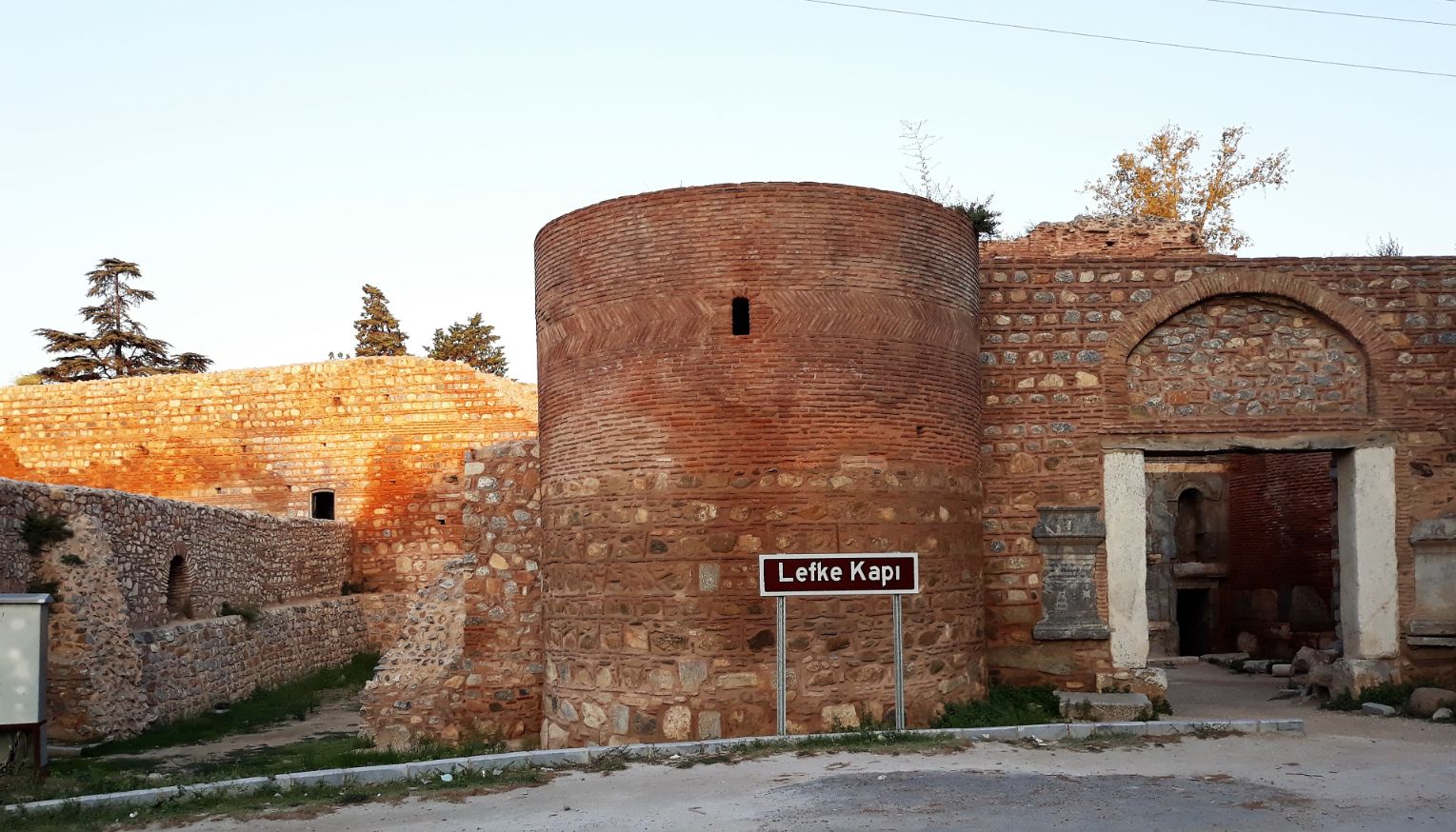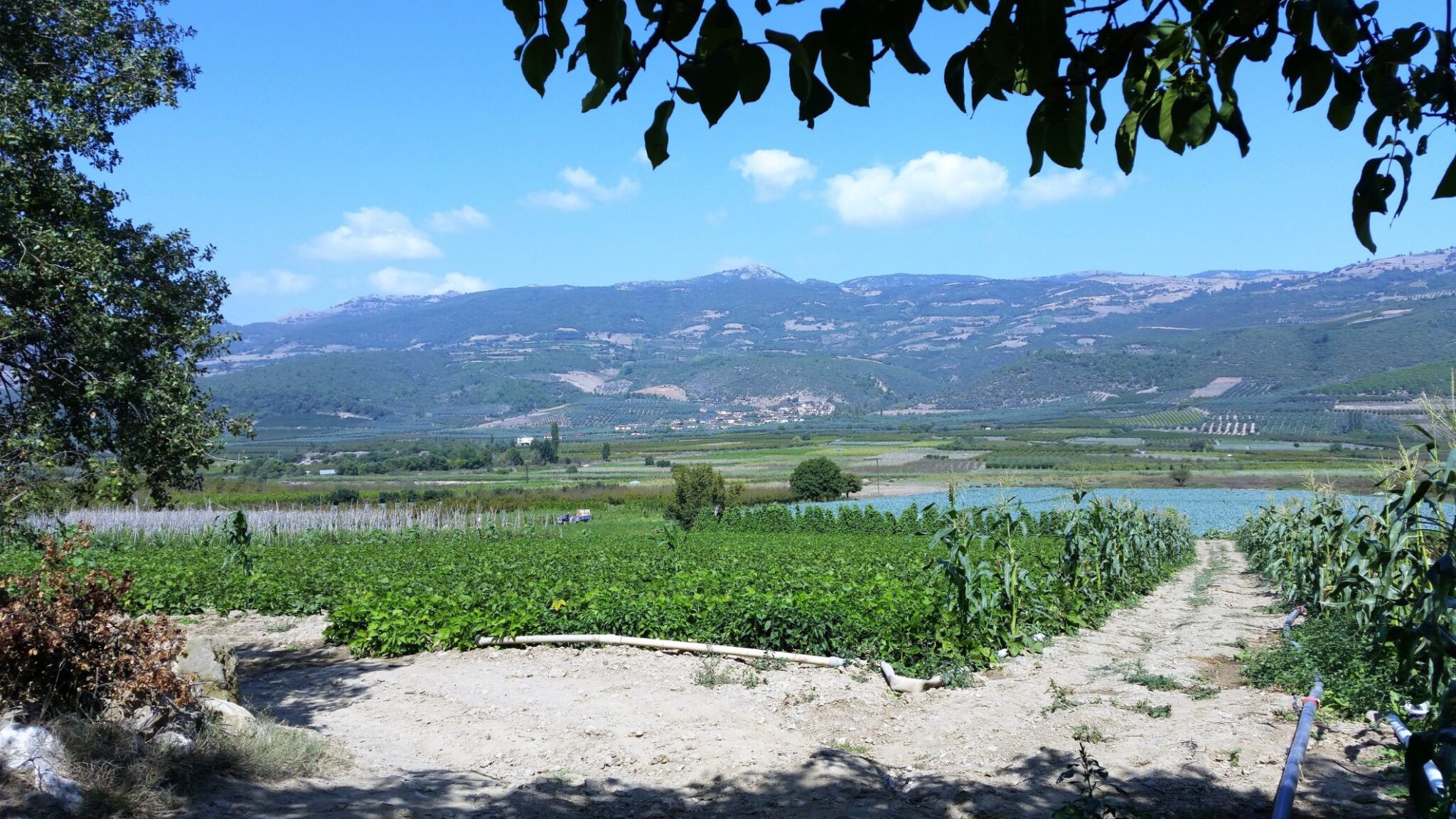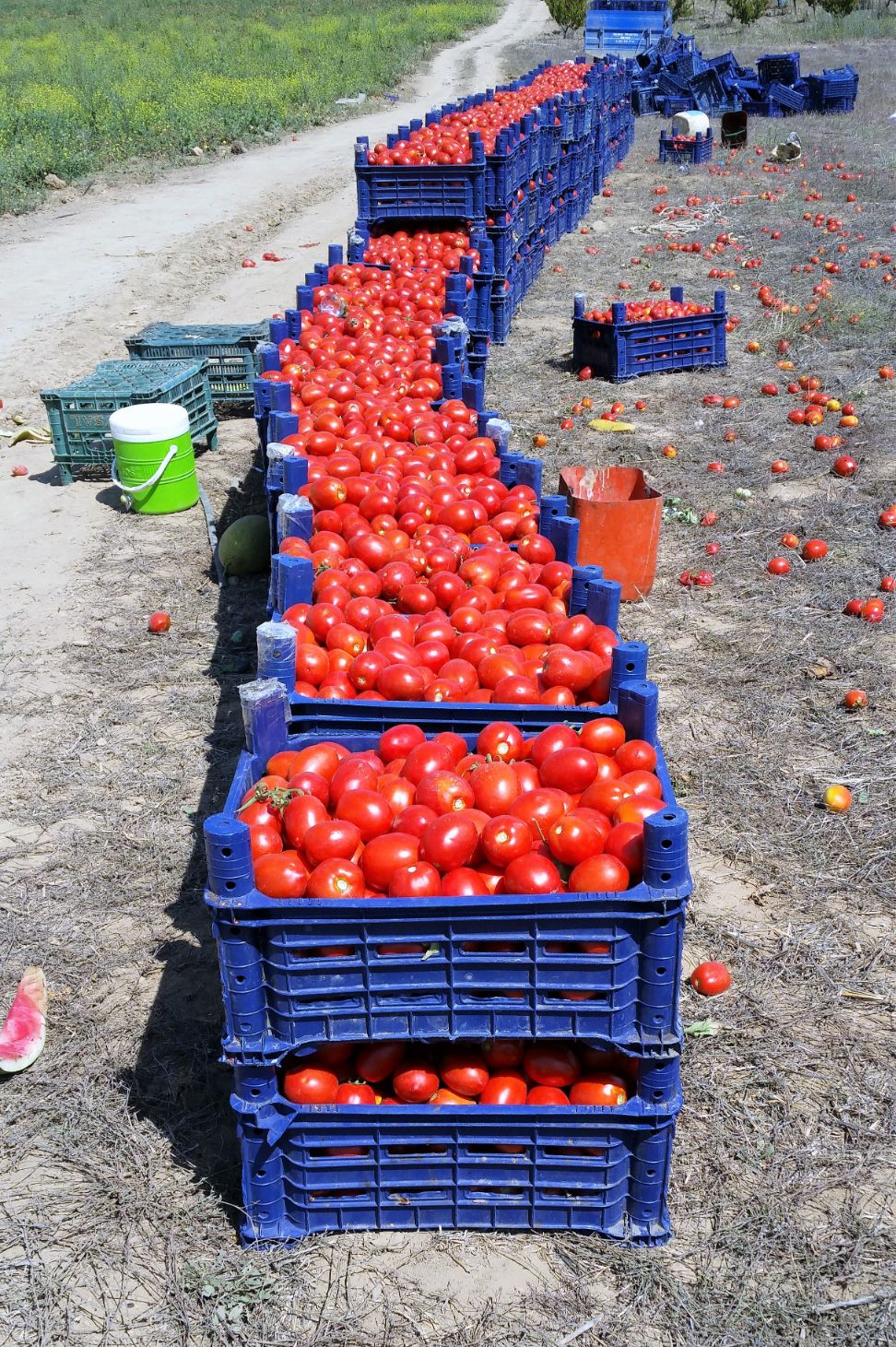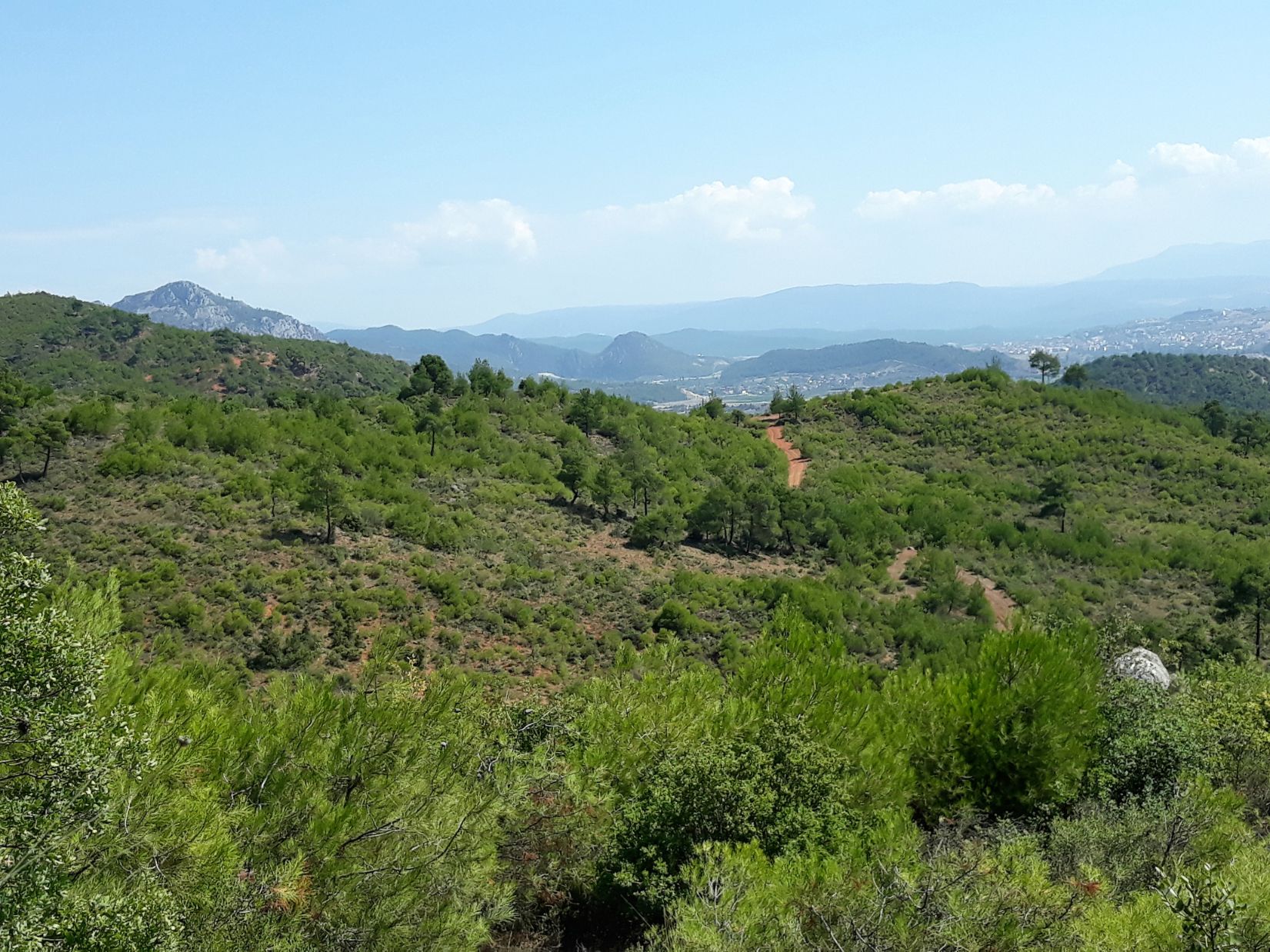Iznik to Osmaneli – 10th September
Distance: 30.6 km – Elevation +380 m -370 m
Weather: Sunny. Temperature: High 28 degrees
‘Known as Nicaea since ancient times, İznik is located on the eastern shore of Lake İznik (Askania Limne) surrounded by ranges of hills within the Bithynia (Marmara) region of Anatolia. There has been human settlement on İznik since prehistory, as witnessed by discoveries of several mounds and tumuli around. According to geographer Strabo, the ancient town was founded in 316 BC by Antigonos, the commanders of Alexander the Great (356-323 B.C). It is also reported that Lysimachos, another general of Alexander, took the city and renamed it after his wife Nicaea. It was during this Hellenistic period that the settlement was planned as a rectangular city with its four gates and two major roads intersecting at the centre.
İznik enjoyed a period of expansion and prosperity under Roman rule. The first phase of today’s city walls was built in the late Roman period probably against the attacks Goths began in 258 AD. The four monumental entrance gates of the city, which were called Lefke (east), İstanbul (north), Göl (west) and Yenisehir (south) were built by the Roman Emperors Vespasianus and his son Titus. The other buildings dated to the Roman period are the theatre located on the southern west part of the city and the Obelisk of Gaius Cassius Philiscus erected on the road from İznik to İzmit (Nicomedia).
During the Byzantine period, İznik became an important religious centre, particularly after the Emperor Constantine was converted into Christianity in 313 AD. The first Christian Council called the great Council of Nicaea was held in İznik in 325 AD with the participation of bishops more than three hundreds came from different parts of the empire. The Seventh Ecumenical Council was also convened in Nicaea in 787 to deal with the iconoclastic controversy on the use of icons. This council was held in the church of Hagia Sophia, constructed by the Emperor Justinian over the ruins of the former church dating back to the 4th century. As it was demolished after an earthquake in the 11th century, the church was rebuilt as a basilica with three naves. The church is still located at the point where the roads leading to the four main gates in the district centre meet. A hypogeum, an underground grave found in the rural part of the town is one of the oldest Christian structures in İznik built in the 4th or 5th centuries AD. Covered by a vault and decorated its ceiling and with colourful frescoes, it is one of the rare examples of the period of early Christianity. Built as a part of the Hyakinthos Monastery in the 7th century, the Koimesis Church was also one of the most important early Byzantine architecture. The church was destroyed in the 1065 earthquake. Although it was repaired in later times, only some of its ruins have survived to the present. Böcek Ayasması (Baptistery), a round structure with a water spring at the center of a quadrangular fountain, is also erected as part of the Hyakinthos Monastery.
Anatolian Seljuks took over Nicaea in 1081, made the city their capital and renamed it İznik. The city was regained by the Byzantines in 1097. During this period, some other churches were built such as Hagios Tryphonos Church with a cross-shaped plan. After the Fourth Crusade captured Byzantine capital of Constantinople in 1204, İznik became the core of the successor Byzantine Empire after emperor Theodore Laskaris founded the Empire of Nicaea there. During this period, the city became an important political and cultural centre with the construction of imperial and civic buildings such as the palace of the Patriarch, the hospitals, the charity institutions, and the churches. The city walls were also expanded and reinforced with plenty of towers.
When Ottoman Beylik captured İznik in 1331, they also formed their capital here. Although İznik enjoyed this title for only a short period, it was during this period that Ottomans built fine examples of early Ottoman architecture, such as the Haci Özbek Mosque (1333), the Green Mosque (1378–91) also known as the Yesil Cami, the Yakub Çelebi Mosque, Mahmud Çelebi Mosque, Nilüfer Hatun İmareti (Soup Kitchen) (1388) and the Süleyman Pasa Madrasa (mid-14th century). During this period, Ottomans also used existing buildings for their own purposes. For example, the Hagia Sophia Church was converted into mosque called Orhan Camii. During the reign of Sultan Süleyman the Magnificent, a minaret was erected and its walls were decorated by the famous architect Sinan.
With the growth of İstanbul as an Ottoman political and cultural centre after 1453, İznik lost its prosperity. The city was revived soon, however, with the introduction of faience pottery making. During the 16th and 17th centuries, İznik became famous for its beautiful tiles which decorate mosques and palaces throughout the Ottoman Empire. Archaeological excavations carried out in tile kiln sites for more than thirty years by the Istanbul University Department of History of Art has not only revealed the unique production and decoration techniques of İznik ceramic, but also shed some light on the social and economic development of the region. The tile kiln excavations at İznik are still going on today.’ – (Text taken from UNESCO » Culture » World Heritage Centre)
I had arranged an early breakfast and left the hotel at 6.45 am. I walked the short distance to the lakeshore and said goodbye to Lake Iznik. The town was still sleeping as I wended my way through the quiet back streets of the town. I passed by Göl Kapı (the ruins of the Roman western gate to the town), and then the clock tower and then Ayasofya Mosque:
‘Ayasofya Mosque formerly the Church of Hagia Sophia. The first church built on the site of Hagia Sophia at İznik was constructed in the 4th century. It was later rebuilt under the patronage of Emperor Justinian I in the mid-6th century. In 787, the church hosted the Second Council of Nicaea, which officially ended the first period of Byzantine Iconoclasm. The Justinianic church was destroyed by an earthquake in the 11th century and the present structure was erected around 1065 over the ruins of the earlier structure.
The Church of Hagia Sophia was converted to a mosque following the fall of Nicaea to the Ottoman Turks led by Orhan Ghazi in 1331 and the building operated as such until 1935, when it was designated as a museum under the regime of Kemal Atatürk. In November 2011 it was again converted into a mosque.’
I passed by the ruins of the ancient Tarihi Hamam before reaching the impressive Lefke Kapi ( East Gate) and the Roman wall that encircled the town.
Leaving Iznik behind, the route started climbing almost immediately, a climb that would continue for the next ten miles. This is a very fertile part of Turkey and tractors were the order of the day all passing with a wave and a smile. There were farmworkers resting beneath the shade of a tree after their morning toil picking tomatoes. Vineyards for the first time with both red and green grapes. I stopped in a tea house in Gaziler and the village elders shared a delicious melon with me. I had my first encounter with the law, a man in a brown uniform complete with a gun in a hip holster stopped me, he said he was a forestry policeman, and asked “why are you here?” and when I explained, he asked if he could take a selfie with me!
This really is a very beautiful part of Turkey. I am staying tonight in the only inn in town, the Osmaneli Municipality Guesthouse.
